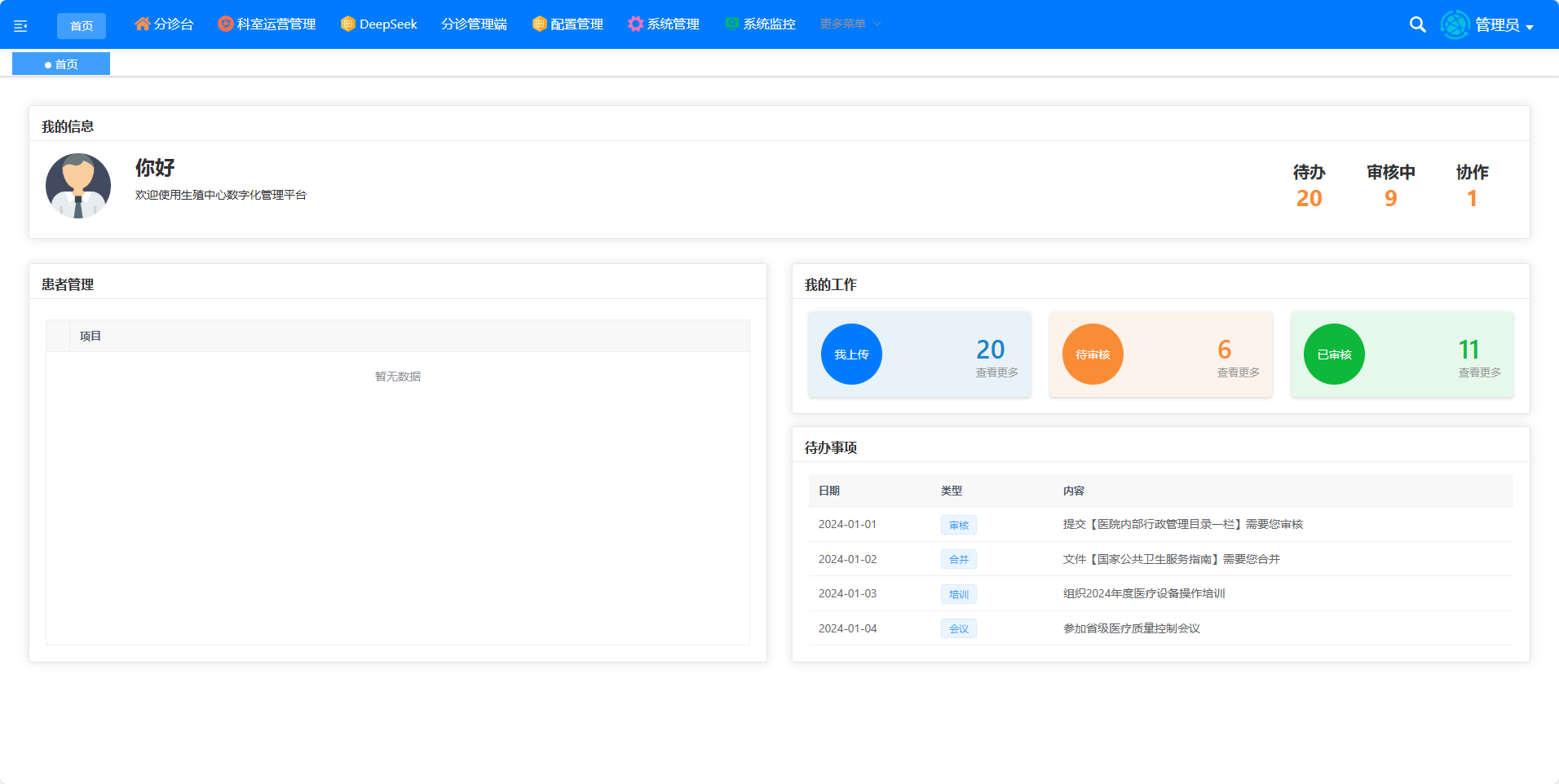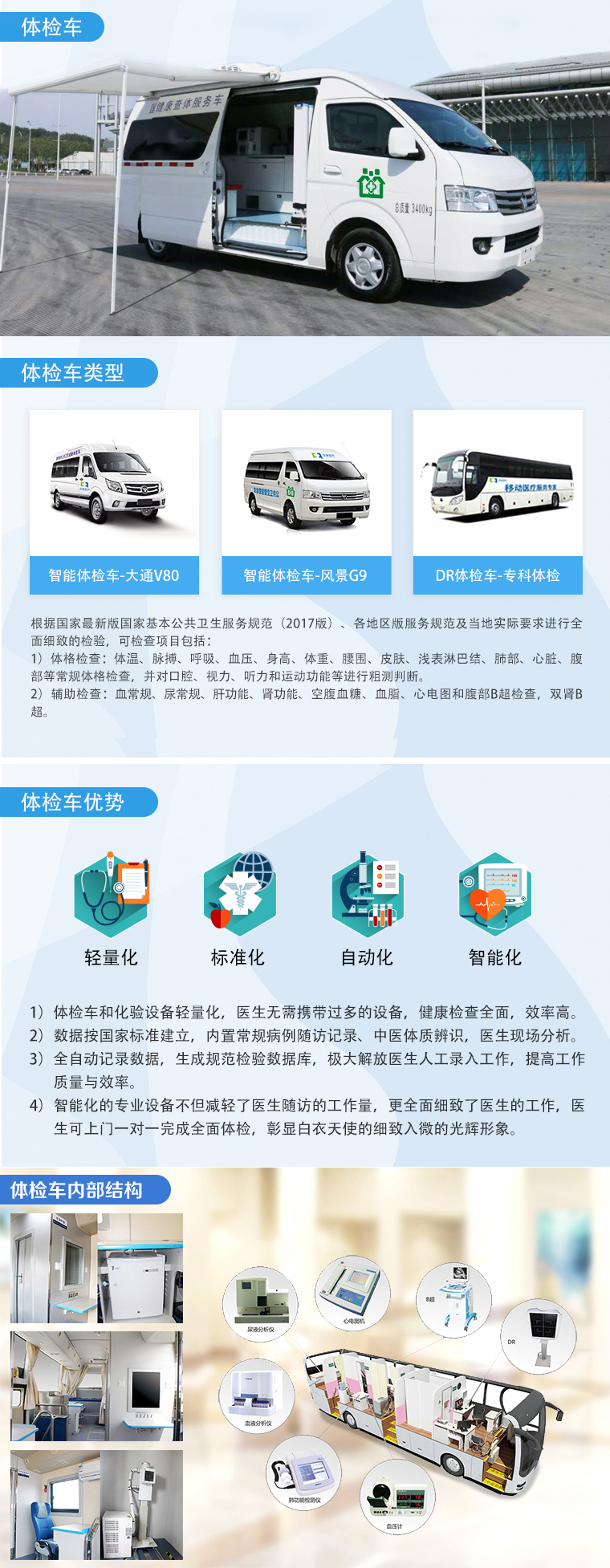实施案例
产品推荐
新闻推荐
智能化医疗系统:医院体检管理系统的主要功能你知道多少
- 2024-07-06
- http://www.guantangyiliao.com/ 原创
- 130
体检管理系统的主要功能包括:
The main functions of the physical examination management system include:
1. 体检登记:系统能够自动接收和登记受检者的信息,包括姓名、性别、年龄、身高、体重、血压、心电图等基本体征信息,以及既往病史、家族史等个性化信息。
1. Medical examination registration: The system can automatically receive and register the information of the examinee, including basic physical signs such as name, gender, age, height, weight, blood pressure, electrocardiogram, as well as personalized information such as past medical history and family history.
2. 体检报告:系统能够根据受检者的体检数据,自动生成详细的体检报告,包括各项检查指标的检查结果、异常情况的分析和建议,以及健康评估和疾病预测等内容。
2. Physical examination report: The system can automatically generate a detailed physical examination report based on the physical examination data of the examinee, including the examination results of various examination indicators, analysis and suggestions of abnormal situations, as well as health assessment and disease prediction.
 3. 数据分析:系统能够对大量的体检数据进行自动分析,包括数据的趋势分析、异常数据的识别和分类等,为医生提供更为精准的诊断依据。
3. 数据分析:系统能够对大量的体检数据进行自动分析,包括数据的趋势分析、异常数据的识别和分类等,为医生提供更为精准的诊断依据。
3. Data analysis: The system can automatically analyze a large amount of physical examination data, including trend analysis, identification and classification of abnormal data, providing doctors with more accurate diagnostic basis.
4. 档案管理:系统能够自动管理受检者的基本资料和体检信息,并能够对历史数据进行比较和分析,以便受检者能够更好地了解自己的健康状况。
4. File management: The system can automatically manage the basic information and physical examination information of the examinee, and can compare and analyze historical data, so that the examinee can better understand their health status.
5. 预约管理:系统能够实现预约管理功能,包括受检者的预约时间、检查项目、医生安排等信息的记录和管理,提高医院的工作效率和管理水平。
5. Appointment Management: The system can implement appointment management functions, including recording and managing information such as the appointment time of the patient, examination items, and doctor arrangements, to improve the hospital's work efficiency and management level.
6. 医疗影像存储与传输:系统能够将医疗影像数据进行存储和传输,包括X光片、CT、MRI等医学影像资料,方便医生进行诊断和比较分析。
6. Medical image storage and transmission: The system can store and transmit medical image data, including X-rays, CT, MRI, and other medical image data, for the convenience of doctors for diagnosis and comparative analysis.
7. 电子病历:系统能够将受检者的基本资料、病史、家族史等信息进行电子化管理,方便医生快速查询和了解受检者的基本情况。
7. Electronic medical record: The system can electronically manage the basic information, medical history, family history, and other information of the examinee, making it convenient for doctors to quickly query and understand the basic situation of the examinee.
8. 健康咨询:系统能够提供健康咨询服务,包括针对受检者的具体情况进行健康建议和指导,以及针对常见疾病的预防和治疗建议等。
8. Health consultation: The system can provide health consultation services, including health advice and guidance based on the specific situation of the tested person, as well as prevention and treatment suggestions for common diseases.
9. 数据共享:系统能够实现与医院其他信息系统的数据共享和交互,包括电子病历系统、医疗影像系统、实验室信息系统等,提高医疗服务的协同效率。
9. Data sharing: The system can achieve data sharing and interaction with other hospital information systems, including electronic medical record systems, medical imaging systems, laboratory information systems, etc., to improve the collaborative efficiency of medical services.
10. 安全保障:系统具有完善的安全保障机制,包括用户权限管理、数据备份与恢复、系统操作日志等功能,确保系统数据的安全性和可靠性。
10. Security: The system has a comprehensive security mechanism, including user permission management, data backup and recovery, system operation logs, and other functions, to ensure the security and reliability of system data.




